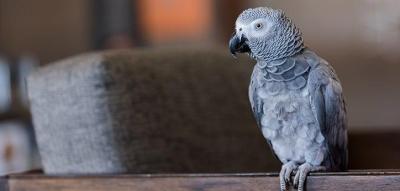
Light for Birds: Sunlight vs. Full-Spectrum Bulbs
Light for birds is important to their health and well-being, and there are several factors to consider. So what kind of light do birds need? Here's what to know about lighting requirements for pet birds, including sunlight recommendations and full-spectrum light bulbs.
Sunlight requirements for pet birds
Birds need natural sunlight for vitamin D production; hormone balance; and organ, skin, and feather health. While we can try to emulate natural light in captivity, there is no substitute for the real deal.
For pet birds, a minimum of 30 minutes of direct sunlight exposure per week is recommended for adequate vitamin D production. But the more you can give them, the better. You can do so by building an aviary in your yard or by taking your bird outside in a travel cage or carrier. If you don't have predatory raptors, such as hawks or eagles, in your area and if your bird has very strong recall in a variety of settings, including outside, then you can also choose to take your bird (with a harness on) outside with you without any sort of enclosure.
When taking your bird outside isn't an option due to extreme temperatures or incomplete training, make sure your bird is getting enough pellets (50-70% of the bird's diet) with synthetic vitamin D and/or is getting enough foods that are high in natural vitamin D.
Home starts with you
Also, making sure that birds live and play in rooms with lots of natural light can also help psychologically. But it will do nothing to help them physically because window glass filters out the ultraviolet (UV) rays that are necessary for vitamin synthesis, organ function, and hormone production.
Indoor full-spectrum lights for birds
Not only do birds see a larger portion of the color spectrum than we do (they’re able to see ultraviolet light), but they also see light faster than we do. Light hits our eyes in waves, and when those waves get fast enough our brains perceive it as solid light. Because birds see light faster than we do, the waves have to be faster for them to perceive the light as being solid.
This means the regular light bulbs we use in our homes, which give off solid light to us, appear to be flickering to our birds. Imagine living in a world of flickering light bulbs. How irritating! How disorienting! How headache-inducing! It's no wonder that pet birds can seem agitated and cranky so often.
The measurement that indicates the speed of light waves emanating from a light bulb is called the color rendering index (CRI). Birds start perceiving light as being solid at a CRI of 91, so the CRI of light bulbs used around pet birds needs to be at least 91. Most full-spectrum light bulbs meet that minimum requirement, but you can also find photography light bulbs with a CRI of 91+ at much cheaper cost than full-spectrum bulbs.
Another note about full-spectrum lights for birds: They aren't a sufficient replacement for natural sunlight. That's because the UV rays only extend about 18 inches from the bulb itself, but keeping full-spectrum lights that close to a bird's cage tends to cause corneal scarring in their eyes. Also, full-spectrum bulbs only produce UVB for about six months, so after that they aren't even providing the physical benefits they claim to. Nevertheless, they are useful as replacements for regular light bulbs in terms of allowing the birds to see their full color spectrum and in solid light instead of flickering light.
